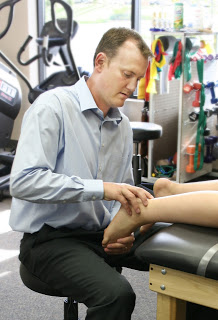Often times the question “Can you fix this?” comes up. The answer to that question depends on many factors, such as:
- What is your injury?
- How long have you had it?
- What kinds of activities do you need to be able to do?
- How committed are you to the process?
When you enter into Physical Therapy, you are committing to a partnership with your care team (Physical Therapists, Athletic Trainers, Physical Therapy Assistants, Doctors, and others).
Here is a self-quiz to help you clarify your commitment to getting better. Try rating each one of these questions on a scale of 1-3.
1 = I don’t see myself doing that regularly at this time
2 = I think I will commit to doing that most of the time
3 = I am 100% committed to the plan
Items to rate:
1. I will make time in my schedule to attend and actively participate in my rehab as my Physical Therapist prescribes.
- (Many injuries are 2-3x/week for 5-6 weeks. This varies based off of your injury, so ask your PT what your prescription is).
2. I will make time to do my home exercises as prescribed.
- (Many injuries take about 30 minutes/day of home exercise or self care such as ice. This varies based off of your injury. Ask your PT what you should be doing).
3. I will consistently avoid performing movements that can make my injury worst.
4. With the help of my rehab team, I will change daily habits or athletic techniques that may be contributing to my injury.
Scoring:
11-12 = You are likely to see quite a bit of improvement
8-10 = You are likely to see some improvement
<8 = Your plan would benefit from revision so that you can start to see results
Have you ever had an injury? Do you have one now? Give this quiz a try and share your thoughts!
*This article is designed to help increase awareness of factors that
determine successful outcomes when rehabilitating an injury. It is not
intended to diagnose, treat, or replace professional medical advice or care.This article was written by Meredith Butulis, DPT, MSPT, ACSM HFS, CPT.



